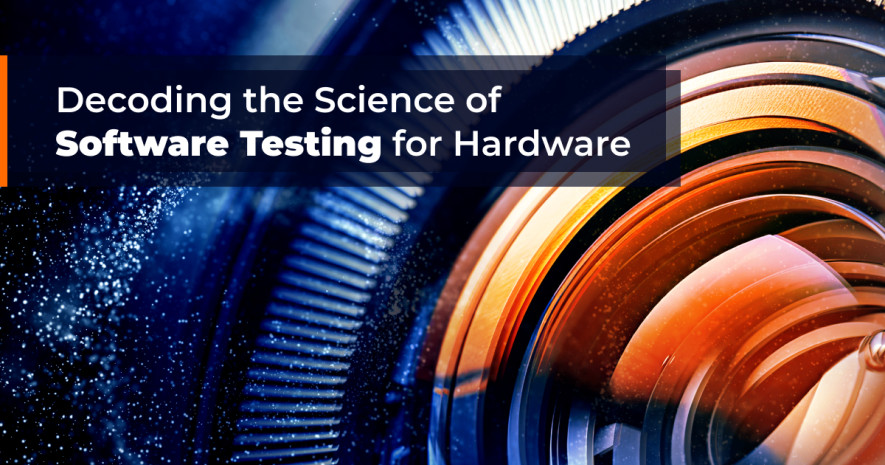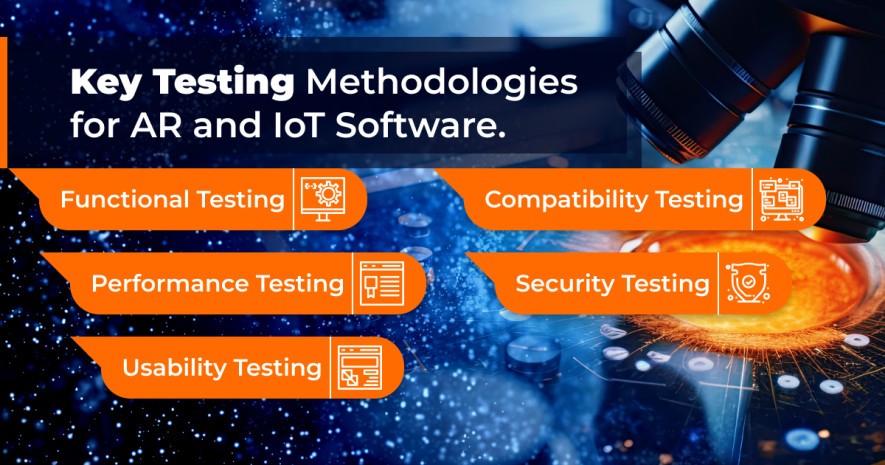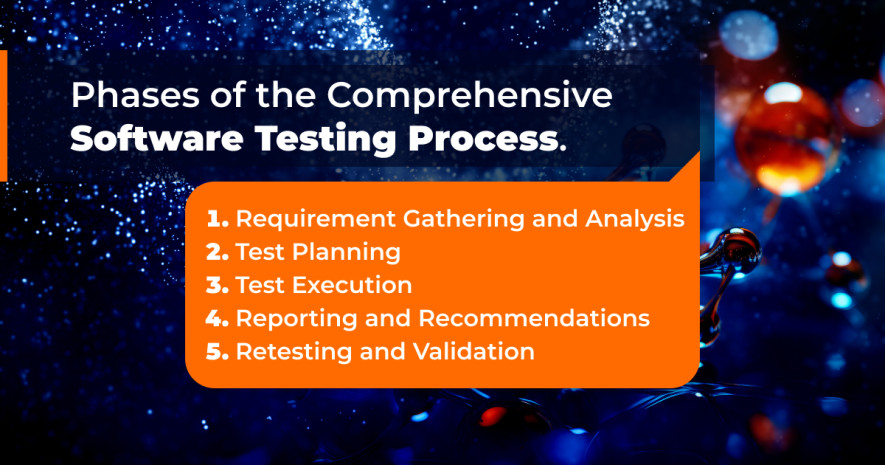- QATestLab Blog >
- Mobile Testing >
- Decoding the Science of Software Testing for Hardware
Decoding the Science of Software Testing for Hardware

In our current dynamic technological era, hardware and software stand as essential elements of any tech-based solution. Hardware, being the physical component, triggers action, while the software, akin to the mind of the operation, determines the functionality. Nevertheless, despite the critical importance of both aspects, there’s often a disproportionate emphasis on hardware, leaving software testing, an equally vital process, somewhere behind.
The reason for such imbalance mainly arises from the viewpoint that the complexities of hardware products are too overwhelming to entrust their software testing to a third-party service provider. Additionally, the anticipated time and cost factors involved in the testing process, and the assumption that emulator-based testing is enough, feed into this neglectful approach. Unfortunately, this mindset can lead to substantial performance issues in the product and impact the overall user experience.
Contrary to the popular belief that software testing is a linear process, especially when it comes to hardware products, this is an absolute myth. Software testing is a multi-layered approach that begins at the base with low-level hardware tests and gradually ascends the pyramid, progressing to driver testing, operating system validation, Application Programming Interfaces (APIs) examination, and finally, application layer testing.
To gain a comprehensive understanding of software testing and its alignment with the hardware, various testing types and stages need to be implemented — delve into our article.
Mobile Software Testing for Hardware: Ensuring Seamless Integration
In an age where digital interconnectivity is already commonplace, smartphones now serve as command centers for an array of hardware devices, ranging from home automation systems to health monitoring gadgets.
That’s why it’s important to make sure that not only the hardware is working smoothly but also the mobile application. Mobile software testing aims to ensure the smooth interaction of hardware and apps across diverse mobile devices and platforms such as Android, iOS, and Windows. The scope of this process is broad, encompassing wearable devices governed by apps and Internet of Things (IoT) devices managed remotely via smartphones.
The mobile software testing process is multifaceted, beginning with validating functions to ensure they work as expected. This is followed by checking interoperability to confirm that the software communicates effectively with the hardware across different platforms and devices. Testing under varying network conditions is also critical to guarantee robust performance under all circumstances.
Comprehensive Software Testing Approaches Across Niches: Phases and Types
At QATestLab, our hands-on experience in ensuring the success of hardware projects is vast, including Augmented Reality (AR) and Internet of Things (IoT). Our real-world testing endeavors have given us a deep understanding of the intricate connection between software and hardware. It’s from this rich tapestry of experiences that we’ve distilled our meticulous and comprehensive approach to software testing. We recognize the paramount importance of software integration with hardware for the seamless operation of your devices. Below, you may find the main phases of testing that our team conducts to help businesses in this niche craft the optimal user experience.
Phase 1. Requirement gathering and analysis
Our process begins with a thorough understanding of your project requirements and objectives. This involves detailed discussions with your team to learn about the hardware specifications, the expected functionality of the software, and the desired user experience. We take into account all potential use cases, making sure we understand the full scope of testing required.
Phase 2. Test planning
Based on the gathered requirements, our expert team designs a robust and comprehensive test plan. This includes outlining the types of testing we will carry out, such as functional testing, performance testing, and usability testing, among others. We customize our approach to fit your specific needs, ensuring that we cover all possible scenarios to ensure software quality.
Phase 3. Test execution
At this stage, our team executes the test plan. We use a variety of testing techniques suitable for the AR and IoT realms, such as:
1. Functional testing checks if your software is functioning as intended and if it interacts correctly with the hardware. We test all software functionalities, from basic operations to complex scenarios, to verify the software behaves as expected.
2. Performance testing evaluates the software’s responsiveness and stability under varying workloads. We simulate different usage loads and stress conditions, testing how your software performs under pressure.
3. Usability testing evaluates the software’s user-friendliness and efficiency. Our team examines the user interface of the software, focusing on intuitiveness, efficiency, and satisfaction.
4. Compatibility testing focuses on ensuring a perfect user experience, guaranteeing software’s consistent functionality regardless of hardware variations. Beyond just evaluating software on diverse hardware configurations, we perform testing directly on real devices, spanning multiple OS like Windows, Linux, Mac, iOS, and Android. Our pool includes more than 350 items of real devices for testing apps in a real environment.
5. Security testing examines the software for potential vulnerabilities that could be exploited, thereby compromising the hardware. It is important to conduct rigorous security testing to detect vulnerabilities and implement necessary improvements to protect against potential threats.

Phase 4. Reporting and recommendations
Following the testing, our team provides a detailed report outlining our findings. These reports include areas of strength, areas needing improvement, detected bugs, and suggestions for fixing these issues. We offer actionable insights for enhancement and ensure that all issues are addressed and resolved.
Phase 5. Retesting and validation
Once the recommended changes have been implemented, we retest the software to ensure all bugs have been fixed and the software functions flawlessly on the hardware.

Real Device and Real Environment Testing: A Fundamental Pillar of Accuracy
In the early stages of software testing for hardware, emulators serve as beneficial tools due to their ability to mimic device behavior conveniently and cost-effectively. However, these instruments offer a condensed version of reality, unable to replicate the complete range of interactions possible in real-world environments. This limitation underscores the importance of two complementary approaches: real device testing and real environment testing. Real device testing uses actual hardware instead of simulated models, providing an authentic landscape for identifying bugs, usability issues, and performance glitches.
In conjunction, real environment testing demands a broad spectrum of devices, operating systems, and network conditions, mirroring the true diversity of end-user environments. Conducting tests in such varied conditions ensures the software’s compatibility and functionality across all possible scenarios, guaranteeing optimal software operation under real-world conditions, strengthening reliability and trust in the software-hardware ecosystem.

Highlighting the Power of Comprehensive Software Testing
Complexity in your hardware product should encourage you to seek out rigorous and comprehensive software testing. At QATestLab, we understand that detailed, methodical testing is the cornerstone of developing superior software that flawlessly integrates with your hardware, regardless of complexity. With our vast technical expertise and an arsenal of diverse devices at our disposal, we ensure the efficiency of our testing methods across the board.Software testing for hardware is a manageable task. Instead, we perceive it as a foundational step to ensure the smooth and efficient functioning of your software and hardware, giving your product the edge in a competitive market. Let QATestLab help in forming a product that is not just robust but superior in its performance and user experience. We offer a wide range of testing services, ensuring each layer of your software aligns seamlessly with your hardware. So let’s begin this journey together, bringing to life a high-performing, top-quality product.
Learn more from QATestLab
Related Posts:
About Article Author
view more articles







No Comments Yet!
You can be the one to start a conversation.